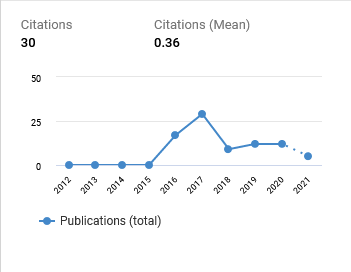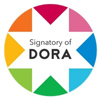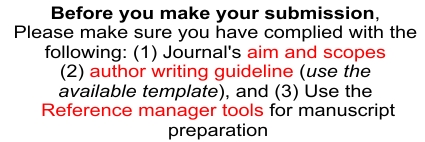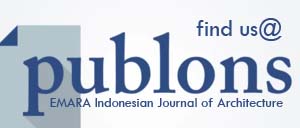The Phenomenon of 'Entertainment Architecture' in Indonesia and Developments in Architecture
DOI:
https://doi.org/10.29080/emara.v2i2.20Keywords:
entertainment architecture,, phenomenon, type,Abstract
The entertainment architecture phenomenon that started in many developed countries in the second half of the 20th century has marked the birth of architectural designs whose primary purpose is to provide interactive entertainment for their users. This literature study aims to analyze a similar phenomenon that grows as an archetype of architectural designs, particularly in Indonesia. The method used in this study is a qualitative research method with a naturalistic paradigm. This study aims to investigate and find the meaning of "entertainment architecture," specific characteristics in visual and architectural forms, and how these characteristics can be read as a type in the development of architecture. The study results conclude that the phenomenon of "entertainment architecture" in Indonesia can be read as the development of new ideas in thinking and making architecture through the figure, its looks, and its form, which are different from the language of pre-existing buildings.
Downloads
References
Abercrombie, N. ( 1994 ). The Penguin Dictionary of Sociology. Penguin Books.
Ahlava, A. ( 2002 ). Architecture in Consumer Society. Doctoral Dissertations. University of Art and Design, Helsinki.
Amanati, R. (2008). Transformation of Meaning in the Visual Appearance of Theme Park Architecture. Journal of Science and Technology, 7(2), 45–53.
Anonymous. (2011). The Paradise in Indonesia: Jawa Timur Park 2 - Batu Secret Zoo, Theme Park & Museum. Retrieved March 16, 2016, from http://surabaya-batu.blogspot.co.id/2011/01/jawa-timur-park-2-zoo-theme-park-museum.html
Anonymous. (2016). coney-island-wallpaper-2.jpg
. Retrieved February 10, 2016, from http://www.coneyislandbre.com/coney-island-wallpaper-2.jpg
Azyafira. (2014). Suroboyo Carnival Night Market [Blog]. Retrieved March 16, 2016, from http://azyafiraw.blogspot.co.id/2014/10/suroboyo-carnival-night-market-place-jl.html
Baudrillard, J. ( 1996 ) . Disneyworld Company. Retrieved from: http://www.ctheory.net/articles.aspx?id=158 . 09 January 2015.15.04 am.
Bonta, J. P. ( 1979 ). Architecture and Its Interpretation: A Study of Expressive Systems in Architecture, New York: Rizolli International Publications, Inc.
Bourdieu, P. ( 1999 ). Language and Symbolic Power in Jaworski, A. & Coupland, N. ( Eds. ), The Discourse Reader, London: Routledge.
Burris, J. (2011). The “Urban Photogénie” of Architainment. The Journal of Aesthetics and Art Criticism, 69(1), 93–103. https://doi.org/10.1111/j.1540-6245.2010.01450.x
Crysler, G. _ C . , Cairns, S. _ & Heynen, H. ( Eds . ) ( 2012 ) The SAGE Handbook of Architectural Theory. London: SAGE.
Creswell, J. W. (2011). Educational Research, Planning, Conducting, and Evaluating Quantitative and Qualitative Research. Boston: Pearson Education, Inc.
disneyland.disney.go.com. (2016, March 16). Disneyland Park. Retrieved February 10, 2017, from https://disneyland/
Dunlop, B. ( 2011) Building A Dream: The Art of Disney Architecture. A BRAMS.
Elliot, A. (Ed.). ( 2010 ) The Routledge Companion of Social Theory. New York: Routledge.
El-Husseiny, M. ( 2004 ) A View on Contemporary Architecture in Egypt. Journal of Architectural Design 74(6), 79.
Eldemery, I. (2009). Globalization Challenges in Architecture. Journal of Architectural and Planning Research, 26(4), 343-354. Retrieved from http://www.jstor.org/stable/43030883
, T.T., ( 1987 ) Archetypes in Architecture. Norway: Norwegian University Press.
Foucault, M. ( 1999 ) The Incitement to Discourse in Jaworski , A. & Coupland , N. (Ed . s. ). The Discourse Reader. London: Routledge.
Gunawan, U. (2013). Architectural Phenomenology; Concept, history, and ideas. Reasons , 12(1). Retrieved from https://jurnal.umj.ac.id/index.php?journal=nalars&page=article&op=view&path%5B%5D=569 .
Hays, K.M. ( 1998 ). Architectural Theory since 1968. Cambridge: The MIT Press.
Herwig, O. & Holzherr, F . ( 2006 ) Architecture and Entertainment . Munich, New York : Prestel.
Hardiyati. (2015). Use an Image of Architectural Details on Javanese Houses in Surakarta (Dissertation). November 10 Institute of Technology, Surabaya
Fernandez-Galiano ( 2005 ) Spectacle and Its Discontents; or The Elusive Joys in Architecture in WS Saunders (Ed.): Commodification and Spectacle in Architecture. London: the University of Minnesota Press.
Jones, P. ( 2011 ). The Sociology of Architecture: Constructing Identities. U.K.: Liverpool University Press.
Kamil, R. (2001). Hyper-reality Cities and Architecture. Kompas Daily Edition Sunday, March 4, 2001.
Kane, J. ( 2013 ). The Architecture of Pleasure: British Amusement Park 1900-1939. London: Ashgate.
Kant, I. (1911 [1790]) Kant's Critique of Aesthetic Judgment. Translated by James Creed Meredith. Oxford: Clarendon Press.
Kelbaugh, D. (2004). Seven fallacies in architectural culture. Journal of Architectural Education, 58(1), 66–68.
King, M. (2002). The Theme Park: Aspects of Experience in a Four-Dimensional Landscape. Material Culture, 34(2), 1–15.
Klassen, W. (1992). Architecture and Philosophy: Phenomenology, Hermeneutics, Deconstruction. Cebu: University of San Carlo Press.
Kleins, N. M. (2004). The Vatican to Vegas: The History of Special Effects. New York: NewPress.
Littaye, P. par A. (2010). Eric Heschong Disneyland's New Tomorrowland TRUE Original Artwork. Retrieved from http://disneyandmore.blogspot.com/2010/10/eric-heschong-disneylands-1998.html
Mills, R. (2009). Meaningful Differentiation: Manifesting Context in Architecture as a Strategy in the Experience Economy. Thesis. Ohio: University of Cincinnati.
Ockman, J. & Eign, E. (Eds.). ( 1993) Architecture Culture 1943-1968: A Documentary Anthology . New York : Rizzoli.
Pangarsha, G. W . (2008). Architecture for Humanity: Visual Culture Binoculars on the Works of Eko Prawoto . Surabaya : WastuLaNas Graphic.
pegipegi.com. (2014). Gangster Town Museum Angkot. Retrieved March 16, 2016, from https://www.pegipegi.com/attraction/T00576/34114_T00576_www_museumangkut_com_wpcontent_uploads_2014_07_GANGSTERSLYDER.jpg
, Y. A . ( 2004 ) Postreality of Cultural Reality in the Age of Metaphysics . Jalasutra.
Prijotomo, J. (2015 ). Archipelago Architecture: A Visit. Surabaya: Wastu LaNas Graphic (not yet published).
Sapir, E. ( 1949 ). Language: An Introduction to the Study of Speech. New York: A Harvest Book, in Hidayat, F. ( 2005 ). Introduction Towards Indonesian Philosophy. https://www.scribd.com/doc/312006293/Ferry-Hidayat-Pengantar-Menuju-Filsafat-Indonesia. Monday, March 14, 2016. 21.08 WIB.
Holl, S., Pallasmaa, J. & Gomez, AP ( 1994 ). Questions of Perception: Phenomenology of Architecture. Tokyo: A+U Publishing.
Venturi, R. ( 1966). Complexity and Contradiction in Architecture. New York: The Museum of Modern Art.
Venturi, R., Scott-Brown, D., Izenour, S. ( 1972 ). Learning from Las Vegas: Revised Edition: The Forgotten Symbolism of Architectural Form. Cambridge: MIT Press.
Vesely, D. (2004). In The Age of Divided Representation: The question of creativity in The Shadow of Production. Cambridge: Massachusetts Institute of Technology.
Walz, S.P. _ ( 2010 ) Toward a Ludic Architecture. The Space of Play and Games. Carnegie Mellon University. ETC Press.
Zerhusen II, R.F. (2007 ). Entertainment Architecture: Contextually Integrated Water Park Resort in Norwood, Ohio ( Thesis ), University of Cincinnati, Ohio

Downloads
Published
How to Cite
Issue
Section
Categories
License
Copyright (c) 2017 Nur Endah Nuffida, Josef Prijotomo, Murni Rachmawati

This work is licensed under a Creative Commons Attribution-ShareAlike 4.0 International License.
- Authors retain copyright and grant the journal right of first publication with the work simultaneously licensed under a Creative Commons Attribution ShareAlike License that allows others to share the work with an acknowledgment of the work's authorship and initial publication in this journal.
- Authors are able to enter into separate, additional contractual arrangements for the non-exclusive distribution of the journal's published version of the work (e.g., post it to an institutional repository or publish it in a book), with an acknowledgment of its initial publication in this journal.
- Authors are permitted and encouraged to post their work online (e.g., in institutional repositories, pre-print sites, or on their website) prior to and during the submission process, as it can lead to productive exchanges, as well as earlier and greater dissemination of published work.
































